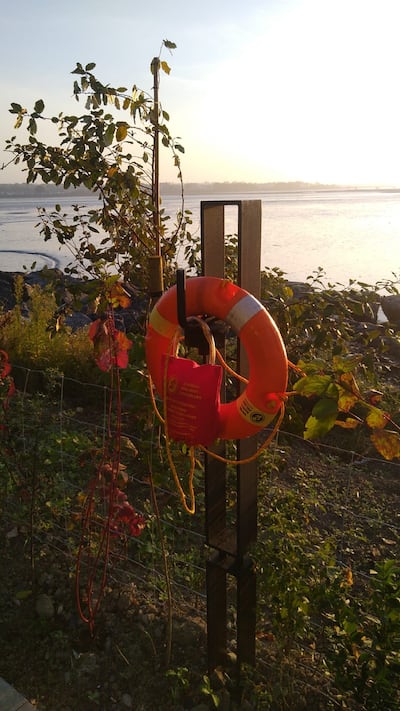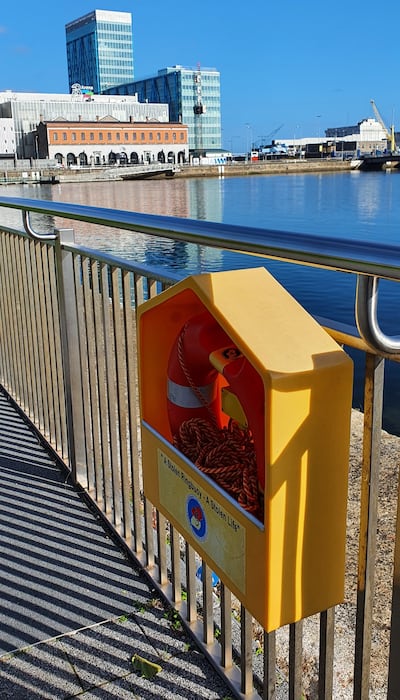A potentially life saving application of Internet of Things (IoT) technology has been deployed by Dublin City Council in partnership with Water Safety Ireland and the Department for Rural and Community Development. The Smart Ring Buoys project involves the installation of new low-cost sensor technology to provide real-time alerts to water safety officers when ring buoys are tampered with or go missing and ensure their timely replacement.
The project involved several technology providers including Three Ireland. The sensors make use of Three’s Low Power WAN (LPWAN) wireless technology which facilitates large scale IoT deployments.
Dublin based mSemicon is one of the technology partners on the project. “We have been in business for more than 20 years,” says managing director Ciarán Ó Bréartúin. “One of our main areas of growth is IoT where our expertise in low cost communication and display technology has been very much in demand.”

He explains the advantages of the LPWAN technology, or more specifically its NB-IoT (Narrowband IoT) variant which is particularly suited to static IoT devices with very low data throughput. “There are other technologies like Sigfox which was the first into the space, but it has limited bandwidth and capacity. LoRa is designed to wirelessly connect battery operated devices to the internet, but it is not run on a network like Three’s. You have to set up own network or make an arrangement with company that has one. And you can’t put it into just any location because you can’t depend on the network being there. The mobile phone network is everywhere. Also, Three’s NB-IoT service is operating on licensed spectrum, and you are getting support from the network provider.”
READ MORE
The company has been using the Three NB-IoT service on the Ring Buoy project since 2022 and sensors are now installed at approximately 150 ring buoy locations along the Liffey Banks and on the canals.
“The devices send messages several times a day,” he explains. “If a buoy goes missing a message gets sent to the Dublin City Council Water Safety team and a red dot on a map indicates where attention is needed. We have also deployed the devices on the Dublin Port Greenway to monitor those ring buoys as well.”
“This is a great project, and we are delighted to work with mSemicon, Dublin City Council and Dublin Port on it,” says Three head of ICT and 3IoT Karl McDermott. “Lifebuoys don’t cost a lot, so you can’t put expensive sensors on them. They can also be located in quite remote areas. NB-IoT technology enables IoT solutions to work in a much wider range of areas. It can go where others can’t. The signals go much further, and you can use low power, low cost devices, with batteries that can last for 10 years or even longer. This is a project that makes a real difference to people, and we have seen immediate benefits in terms of saving money and, more importantly, ensuring the lifebuoys are there when people need them. It’s potentially saving people’s lives.”

The long battery life and widespread availability of the NB-IoT network are key characteristics. “The whole idea of IoT is to use the minimum amount of power so that the batteries last a very long time,” says Ó Bréartúin. “This means you can deploy the devices in difficult to access places like bridges and so on. Even in easy to access places, it’s quite expensive to send people out to change batteries.”
“The number of devices involved in this project is relatively small, but the impact is great,” adds McDermott. “With IoT you can have hundreds of thousands of devices connected. The ESB smart meter project involves over two million devices, for example. But it can go right down to hundreds of devices. The important thing about the NB-IoT technology is that it’s using licensed spectrum. The network is very robust and in a different league to unlicensed networks. Our customers also have access to a management platform to manage the devices and SIMs. They can use that to communicate with SIMs to identify and fix faults, for example. IoT is experiencing a huge amount of growth in applications like CCTV and agriculture and so on. This project is at the other end of the spectrum where the devices are sending tiny amounts of data from remote locations where need to be able to deploy them and forget about them for a long time. Prior to this project it could take up to four weeks to replace a missing buoy. The Water Safety Team is now alerted in near real time allowing the buoy to be replaced quickly so that it is there when needed.”














